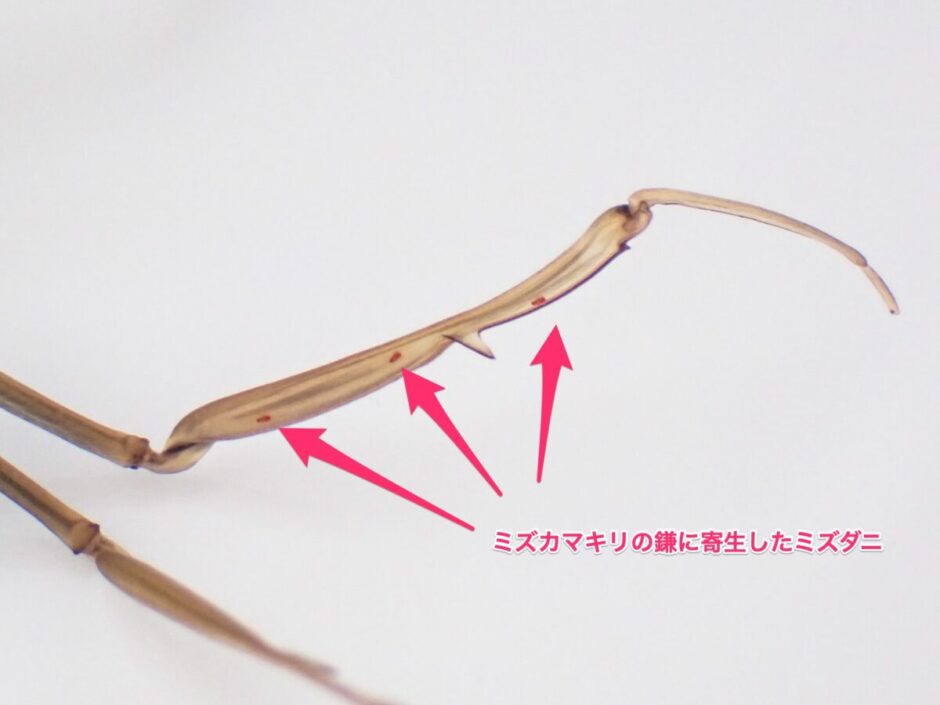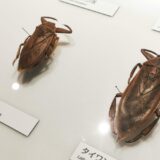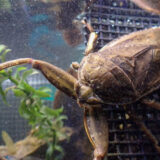Water bugs such as dragonflies and water Ranatra chinensis are sometimes parasitized by water mites. When they are parasitic, they are bag-shaped and immobile, so I kept them for a while to check where the adult mites started swimming.I have to admit, I was surprised by water mite.
Water mites are brightly colored and are called jewels of the waterfront
There are more than 200 species of mites in Japan alone, and their body color is so vivid that some of them are named after jewels. I’ve encountered them relatively often in the field, but I’ve always just passed them off as “Oh, those things. The other day, the topic of mites came up in a conversation with a follower, so I decided to take a closer look.
The body color is beautiful, and there are a lot of beautiful one such as red, orange, green, and yellow, and there is the one named hosek mite and ruby mite. Since there are many things within 1 mm in size, it is too small to observe with the naked eye, so researchers and enthusiasts of aquatic insects are few people who seriously look at mizudani even if they know it.
Proposal of environmental learning program utilizing plants in Fukada Park
Water mites are parasites of a wide range of aquatic insects.
Water mites look like ordinary mites, but they live in water and parasitize aquatic insects. According to a paper summarizing the parasites (Dr. Ohba again!) ) that summarizes the parasites, there are records of parasites on mosquitoes, woodpeckers, giant water bugs, water squirrels, dragonflies, gadflies, snails, and bivalves.
Masuda (1942) reported parasitizing on Appasus japonicus and Ranatra chinensis in Osaka City. Abé et also al. (2015) reports that a species of the genus Ozumidani collected in Sagamihara City, Hiratsuka City, Minamiashigara City, Minamiashigara City in Kanagawa Prefecture, and Hokuto City and Nirasaki City in Yamanashi Prefecture and Mizukamisani collected in Tatsuno City and Sayo Town, Hyogo Prefecture are infested with a species of plums, that there is a preference for the species of aquatic insects that are the host, that there is a tendency for more mites to live in larvae than adults in the Appasus japonicus, there is no difference in the paragenic rate in relation to the difference in male males and body sizes of Ranatra chinensis. tends to parasitize mites on the chest and legs.
Earth mites parasitic on Japanese aquatic animals
As far as I can tell, there seems to be a difference in the parasite rate of mites between the praying mantis and the flying squirrel. While the praying mantis is often attached to the ground, I don’t see it as often in the white stork. I wonder if the difference is that they hide in the mud.
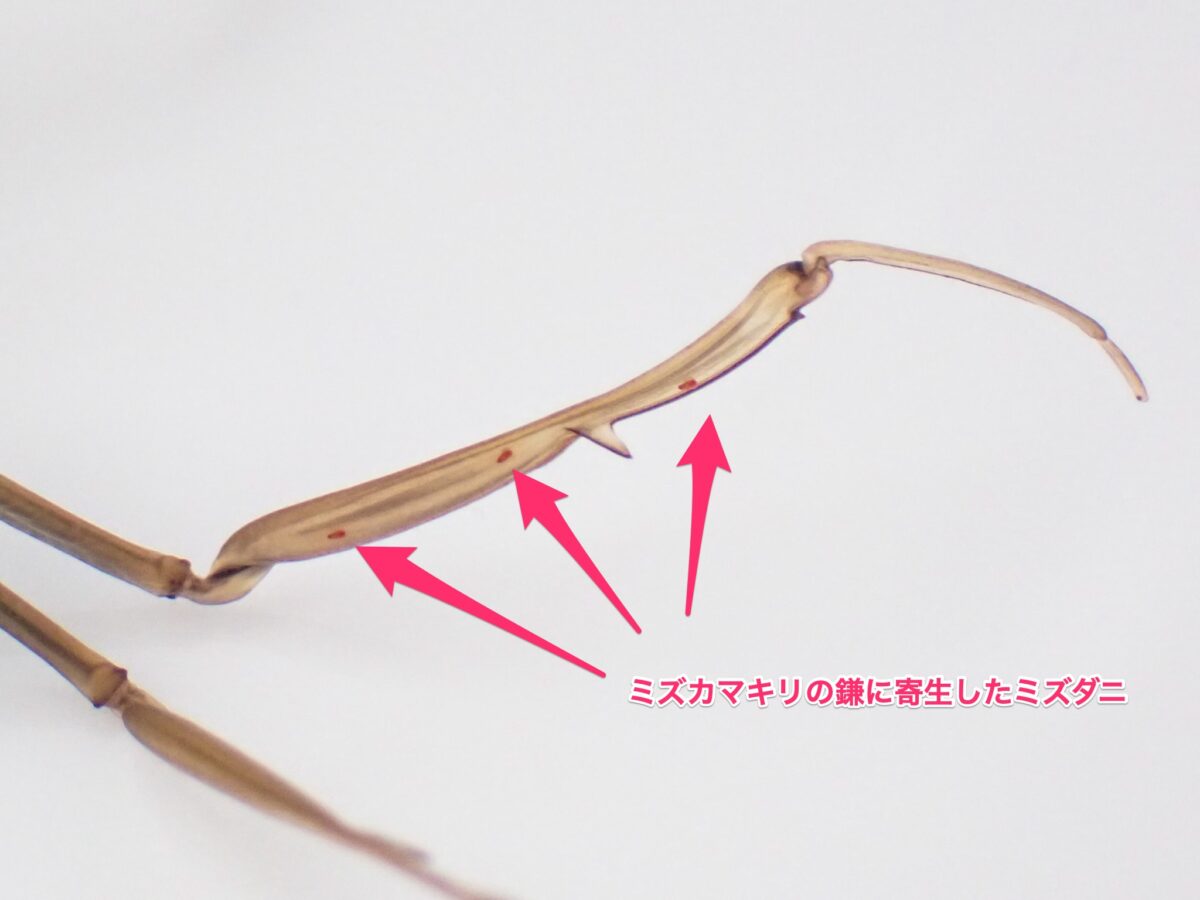
“That bag” attached to aquatic insects is a parasitic form of a water mite
The water mite parasitizes in the bag form like this, and in the photo below more than 10 individuals parasitize.
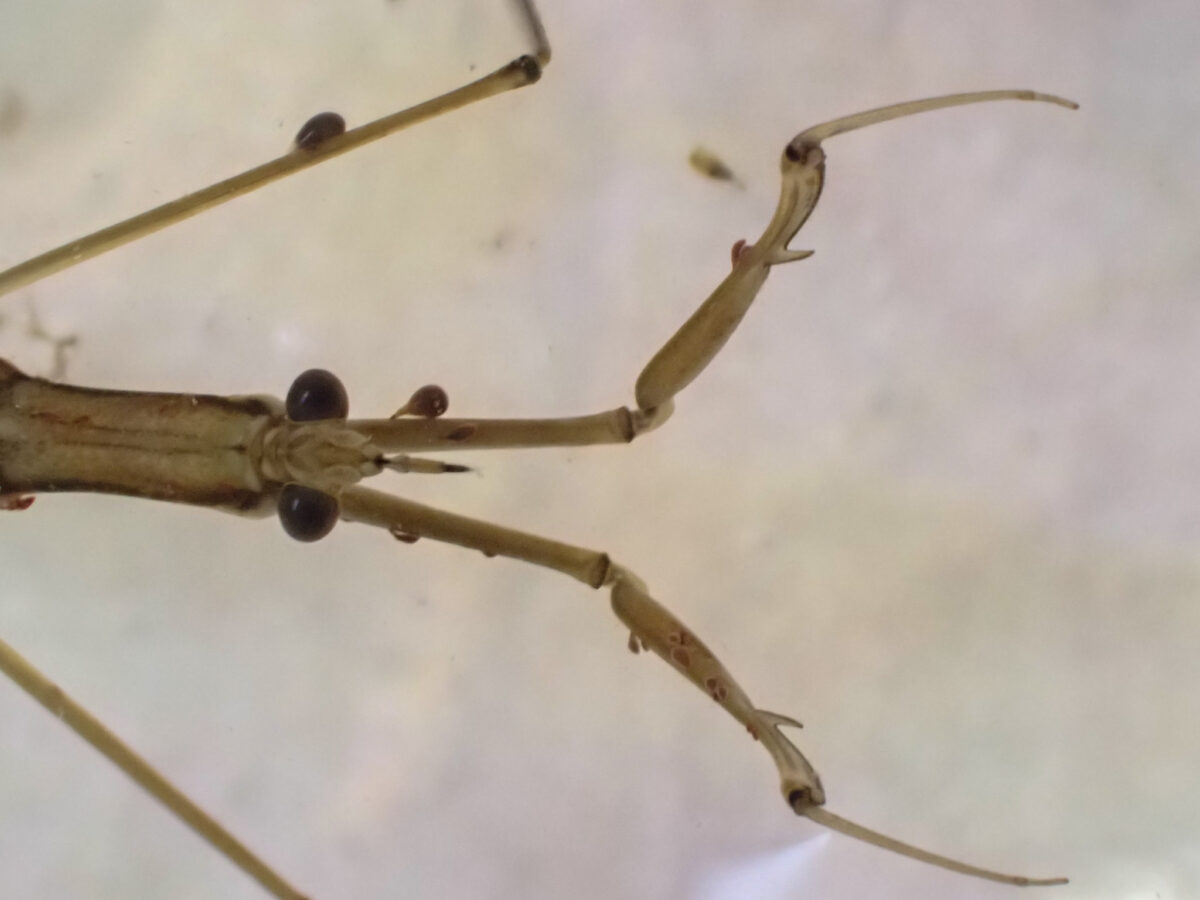
The life cycle of the water mite follows the developmental process of egg, egg pupa, larva, first pupa, young, second pupa, and adult. When the larvae are parasitized, they become the first pupae, and when the young are parasitized, they become the second pupae. The young and adult pupae are free-swimming, while the pupae are pouch-shaped and immobile. We often see the second pupa, which is the large and conspicuous one.
I don’t know why there are two stages of pupae, but it may be because of the need to switch when the parasite molts or hatches.
Incidentally, a newt parasitic mite has also been found (press release), , and since this member of the family spends its entire life on the body surface of newts, the presence or absence of molting and hatching may have affected the evolution of the growth process.
Adult water mites swims skillfully
The parasitic mite is baggy and immobile, so I wondered if it was a mite. I would like to see the adult mites. After keeping Ranatra chinensis for a while, an adult mite appeared, so I collected it with a dropper and took a video.
They are 1-2mm in size, so you can’t see the details, but you can see how they move their legs and swim skillfully. The vivid red color also makes it an eye-catching creature.
